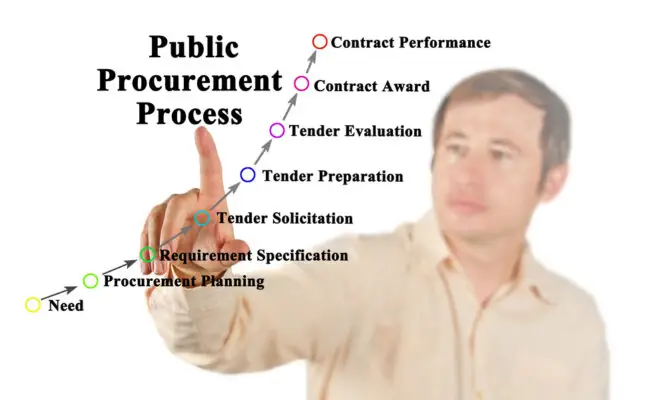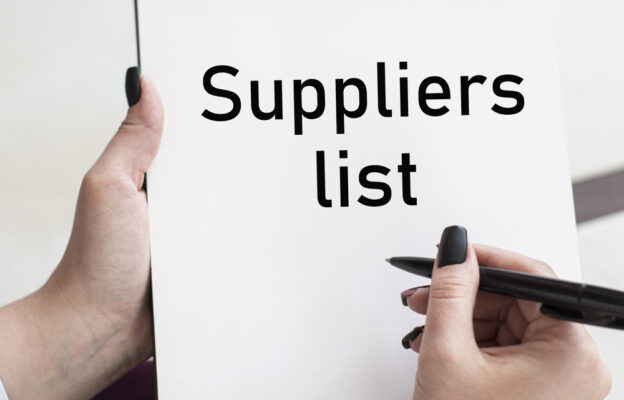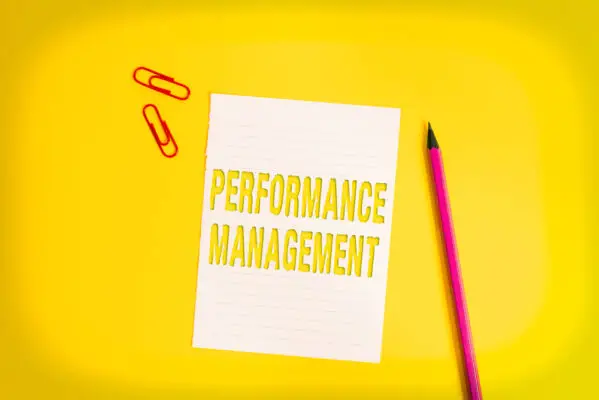Evaluating supplier performance is crucial in ensuring the consistent quality of goods and services, maintaining supply chain efficiency, and nurturing good supplier relationships. Here are some steps that can guide an enterprise on how you can evaluate supplier performance:
Establish Evaluation Criteria: The first step is to set the criteria for evaluation. These criteria should be relevant to your business needs. Typical criteria include product or service quality, delivery time, price competitiveness, and service support.
Develop a Supplier Scorecard: A supplier scorecard is a popular tool used for this purpose. It lets you track and quantify performance concisely and consistently. It should include key performance indicators (KPIs) such as on-time delivery, quality acceptance rate, response time, and total cost of ownership.
Regular Audits: Conduct regular audits to verify the suppliers meet your industry’s compliance standards. These audits can be based on your quality management system or specific standards applicable to your industry.
Monitor Delivery Performance: Check if the supplier consistently meets the agreed-upon delivery schedule. Track metrics such as on-time delivery rate, order completion rate, and order cycle time.
Assess Quality of Goods or Services: The quality of goods or services is one of the most critical factors in supplier performance. Monitor the rate of defective or returned products and track the supplier’s ability to improve and maintain the quality of their goods or services over time.
Evaluate Communication and Service: Excellent customer service is crucial in a supplier relationship. Evaluate their response time, communication quality, and ability to promptly and effectively address issues.
Financial Analysis: Evaluate the financial stability of the supplier. You want to ensure they can maintain consistent production and delivery, especially during market volatility.
Feedback from Internal Stakeholders: Get feedback from employees who regularly interact with the supplier. Their insights could help identify strengths and weaknesses that aren’t immediately apparent.
Benchmarking: Compare your suppliers with each other or with standards in your industry. This helps to determine how well they stack up against the competition and what improvements can be made.
Supplier Development: The evaluation isn’t just to rate and help suppliers improve. Share performance feedback with them regularly and suggest areas of improvement.
The success of any business depends on establishing strong relationships with suppliers, which requires continuous monitoring and evaluation of their performance.
Effective communication and collaboration are essential for successful supplier performance management, as they enable organizations to identify areas for improvement and implement corrective actions.
Organizations use key performance indicators (KPIs) to evaluate supplier performance, measuring various aspects such as cost, quality, delivery time, and customer satisfaction. These metrics help businesses to identify suppliers who meet or exceed expectations and those who fall short.
Regular intervals of monitoring supplier performance against KPIs, organizations can identify potential risks in their supply chain and take proactive measures to mitigate them.
This article will explore practical ways for evaluating supplier performance using KPIs, tools for monitoring, regular check-ins, developing action plans, and consulting services.

Metrics for Evaluation
In supplier performance management, selecting a handful of meaningful and actionable key performance indicators (KPIs) is recommended for effective measurement. These KPIs should be tailored to the specific needs and goals of the business, as well as reflective of the characteristics of inbound logistics and purchasing functions.
Common KPIs include:
- Lead time.
- Delivery accuracy.
- Quality.
- Cost.
- Communication.
- Ordered price versus invoiced price.
- Percentage of units failing inspection versus total inspected units.
- Returns rate metrics.
- Order fill rate metrics.
- Lead-time variance metrics.
Selecting only the most relevant metrics for measuring supplier performance is essential.
Companies may need to change their processes and systems to support supplier improvement based on these KPIs. Consulting firms can help companies get started with supplier performance monitoring by providing access to a vast pool of supplier performance KPIs. They can also help implement a portfolio of KPIs and connect companies with industry peers for benchmarking.
An effective selection of supplier performance measures will enable organizations to establish strong relationships with suppliers while reducing costs and increasing customer satisfaction.
Tools for Monitoring
One of the options available for tracking supplier performance measures is using digital platforms or paper-based checklists. These tools can provide consistent and standardized measures for evaluating supplier performance, which helps compare different suppliers. Electronic measurement ensures that performance metrics are consistently applied to all suppliers.
Digital platforms offer several advantages over paper-based checklists since they allow for automation and real-time monitoring. This feature enables procurement departments or business stakeholders to regularly track supplier performance against KPIs. Moreover, these platforms can help tailor incentives/sanctions based on supplier performance.
However, there are some limitations to using these tools as well. For instance, they may not be flexible enough to adapt to changing business needs or adjust based on specific requirements like goods versus services.
Furthermore, a lack of commitment from suppliers and an inability to customize incentives/sanctions may also hinder their effectiveness in evaluating supplier performance.
Regular Check-Ins
Regular check-ins with suppliers are crucial to maintaining strong relationships and ensuring ongoing communication and collaboration toward shared goals. These check-ins should be conducted regularly, depending on the nature of the relationship and the frequency of interaction between parties.
The purpose of these check-ins is to ensure that both parties are aligned in terms of expectations, objectives, and performance measures. During check-ins, it is important to review progress against KPIs and identify areas where improvements can be made.
This allows both parties to provide feedback on each other’s performance, share best practices, and discuss any challenges or issues that may have arisen since the last meeting.
Effective communication during these sessions can help resolve problems before they become major issues while fostering trust and transparency between parties. Regular check-ins with suppliers demonstrate a commitment to building strong relationships based on mutual respect and partnership.
Companies can gain valuable insights into their supplier’s operations, processes, and capabilities. This information can improve supply chain efficiency, reduce costs, enhance customer satisfaction, and drive organizational innovation.
Frequent interactions with suppliers can help companies stay ahead by creating competitive advantages through stronger partnerships with key suppliers.
Developing Action Plans
Developing effective action plans is crucial for addressing any issues identified during supplier performance monitoring and improving supply chain efficiency.
Once areas for improvement have been identified, action plans should be developed to address these issues and improve supplier performance. These action plans should include specific goals, timelines, and metrics to measure progress toward achieving the desired outcomes.
To develop effective action plans, involving all relevant stakeholders in the process is important. This includes procurement teams, business stakeholders, and suppliers themselves.
Through the involvement of all parties in developing action plans, there is a greater sense of ownership and commitment to achieving the desired outcomes. In addition, it ensures that everyone has a clear understanding of their role in driving improvements.
The table below provides an example template for developing an effective action plan:
| Action Item | Responsible Party | Timeline |
|---|---|---|
| Improve lead time | Supplier X | 3 months |
| Implement quality control measures | Procurement Team | 6 months |
| Increase communication frequency | Both Parties | Ongoing |
Developing effective action plans is critical for improving supplier performance and increasing supply chain efficiency.
Companies can drive meaningful improvements in their supply chains by involving all relevant stakeholders in the process and setting specific goals with measurable metrics.
Consulting Services
Consulting services can provide valuable support to companies seeking to improve their supplier performance management practices. These services offer access to a wealth of knowledge and experience that can help organizations establish effective supplier performance measurement frameworks.
Consulting firms can assist in developing tailored KPIs, implementing monitoring tools, and establishing action plans for improving supplier performance.
Here are three ways consulting services can help companies evaluate their supplier performance:
Access to Best Practices:
Consulting firms have extensive knowledge of best practices in supplier performance management across different industries. They can provide benchmarking data and insights into what has worked well for other organizations, enabling companies to adopt proven strategies for measuring and improving supplier performance.
Objective Third-Party Perspective:
Consultants bring an objective perspective free from the internal biases that may affect company employees’ judgments of suppliers’ performance. This impartiality allows consultants to identify areas where improvements are needed without fear of upsetting internal stakeholders or damaging supplier relationships.
Customized Solutions:
Consulting firms can develop customized solutions based on each organization’s unique requirements – from defining KPIs that align with business objectives to designing monitoring tools that fit specific supply chain processes while ensuring data accuracy and consistency.
Consulting services are vital in helping organizations improve their supplier performance management practices by providing expertise, objectivity, and customized solutions that enable them to measure and continually improve supplier performance.

Frequently Asked Questions
What are some common challenges companies face when implementing a supplier performance management program?
Common challenges companies face when implementing a supplier performance management program include difficulty defining measurable KPIs, lack of supplier commitment, need for flexibility, inability to tailor incentives/sanctions, and the requirement for effective communication between all parties involved.
How can companies ensure supplier performance metrics align with their overall business goals?
To ensure supplier performance metrics align with overall business goals, companies should establish clear objectives and KPIs that reflect those goals. Regular communication and collaboration between procurement and other departments can also help ensure alignment.
What role does technology play in supplier performance management, and what tools are available to monitor supplier performance?
Technology plays a crucial role in supplier performance management, with tools such as digital platforms, spreadsheets, and specialized software available for monitoring performance against key performance indicators (KPIs). These tools allow for consistent measurement and ease of reporting.
How can companies ensure their supplier evaluations are fair and objective, and what steps can be taken to mitigate bias?
To ensure fair and objective supplier evaluations, companies can establish clear criteria for performance measurement, use multiple evaluators, and provide training on avoiding bias. Regular reviews and open communication can also help mitigate bias in supplier performance management.
What are some best practices for communicating with suppliers about performance issues, and how can companies ensure that their feedback is constructive and actionable?
Best practices for communicating with suppliers about performance issues include clear and specific feedback, focusing on objective data and actions rather than subjective opinions, and working collaboratively to develop solutions.
Companies can ensure feedback is constructive by providing actionable steps for improvement and involving suppliers in the process.

Conclusion
Evaluating supplier performance is fundamental for maintaining a competitive advantage in today’s business environment. It requires establishing strong relationships with suppliers and measuring their performance using key performance indicators (KPIs).
Effective communication plays a critical role in managing supplier performance successfully, and regular check-ins and formal evaluations should be conducted to identify areas for improvement, reduce costs, and increase customer satisfaction.
Organizations can achieve this by monitoring KPIs such as delivery times, product quality, and responsiveness to issues raised. They can also use tools like scorecards to track supplier performance over time.
Developing action plans based on the evaluation results is essential for continuous improvement. Consulting services may also be beneficial in providing expert guidance on the most appropriate metrics to evaluate supplier performance effectively.
Effective supplier performance management enhances a company’s ability to meet its strategic goals, enabling it to remain competitive in its market niche.

Chris Ekai is a Risk Management expert with over 10 years of experience in the field. He has a Master’s(MSc) degree in Risk Management from University of Portsmouth and is a CPA and Finance professional. He currently works as a Content Manager at Risk Publishing, writing about Enterprise Risk Management, Business Continuity Management and Project Management.


